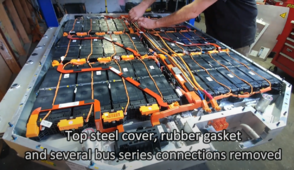lagmonger
New Member
I have access to several 77.4 kWh Hyundai Ioniq 5 batteries that I would really like to use at my house for stationary storage, but I have no idea how to make that work. Does anyone know what it would take to hook these up to charge off solar and power my house?
I believe they operate at 697 V, which I'm guessing is too high for a lot of normal hardware. I'd like to keep the pack intact if possible, but am open to other options.
I also know there's a lot of thermal management in the vehicle to keep these batteries happy and healthy, but I'm hoping passive cooling will be ok for stationary use, which should be much less severe (the high performance version of this vehicle can pull 448 kW!).
Any insight would be greatly appreciated.
Here's what the inside of the pack looks like (from YouTube):

I believe they operate at 697 V, which I'm guessing is too high for a lot of normal hardware. I'd like to keep the pack intact if possible, but am open to other options.
I also know there's a lot of thermal management in the vehicle to keep these batteries happy and healthy, but I'm hoping passive cooling will be ok for stationary use, which should be much less severe (the high performance version of this vehicle can pull 448 kW!).
Any insight would be greatly appreciated.
Here's what the inside of the pack looks like (from YouTube):




